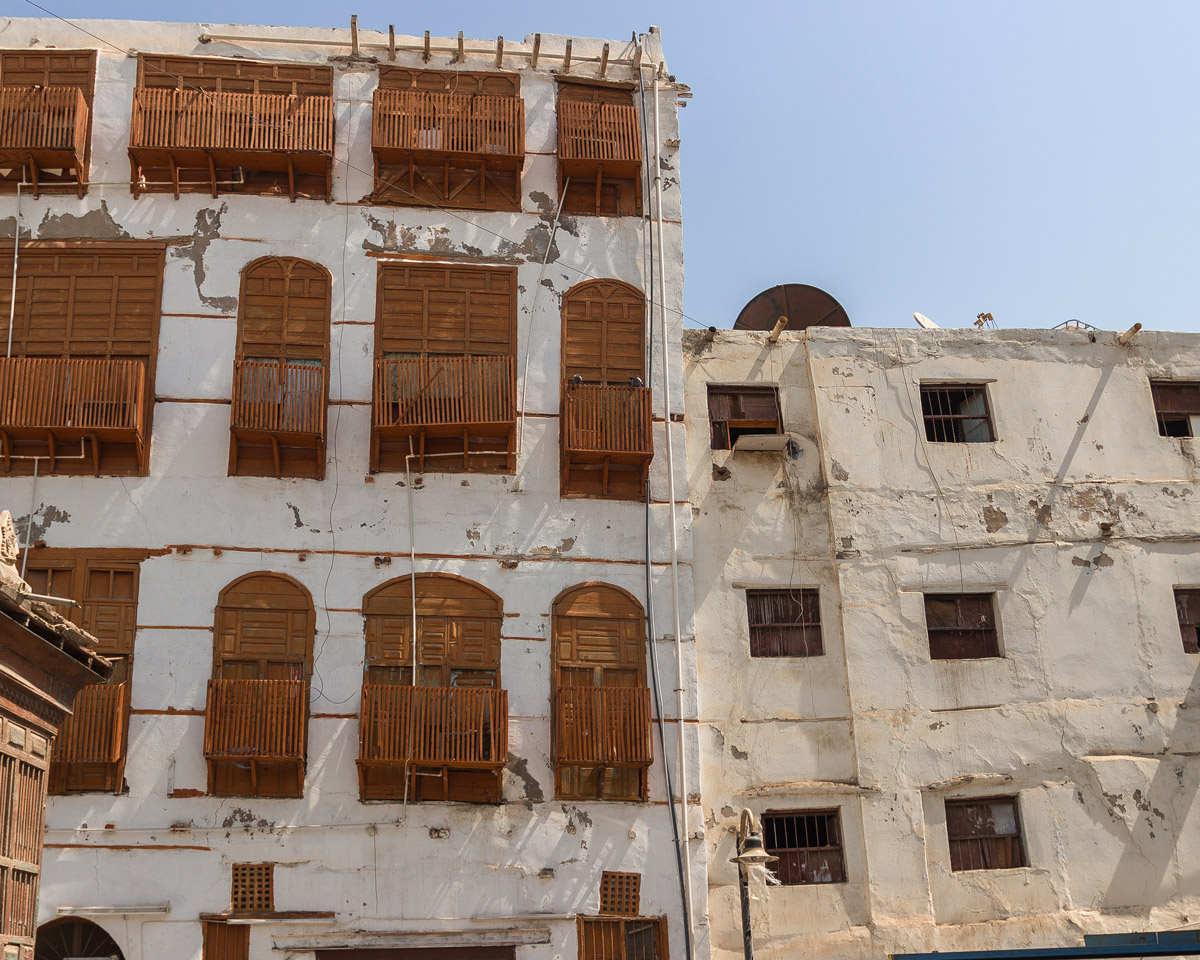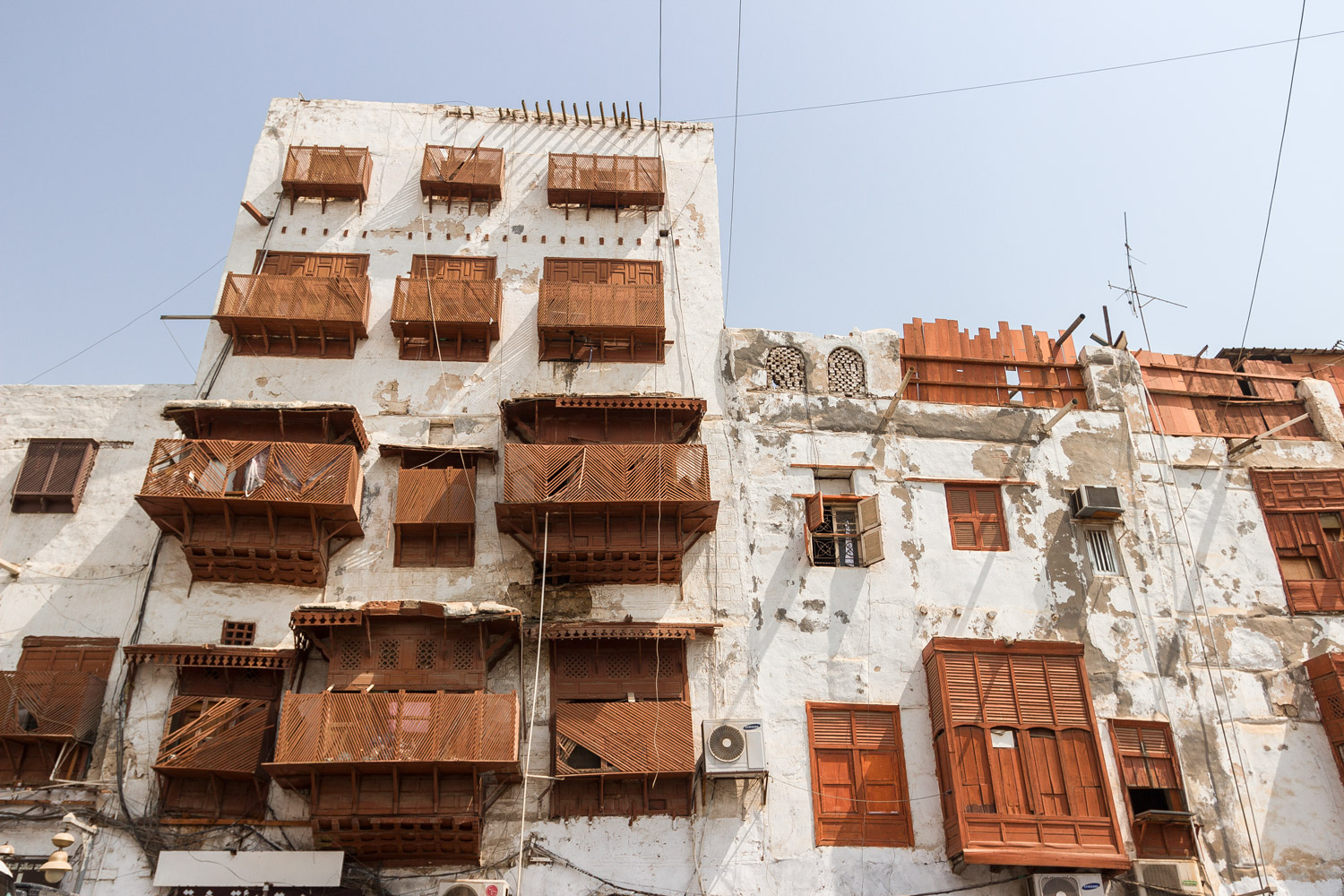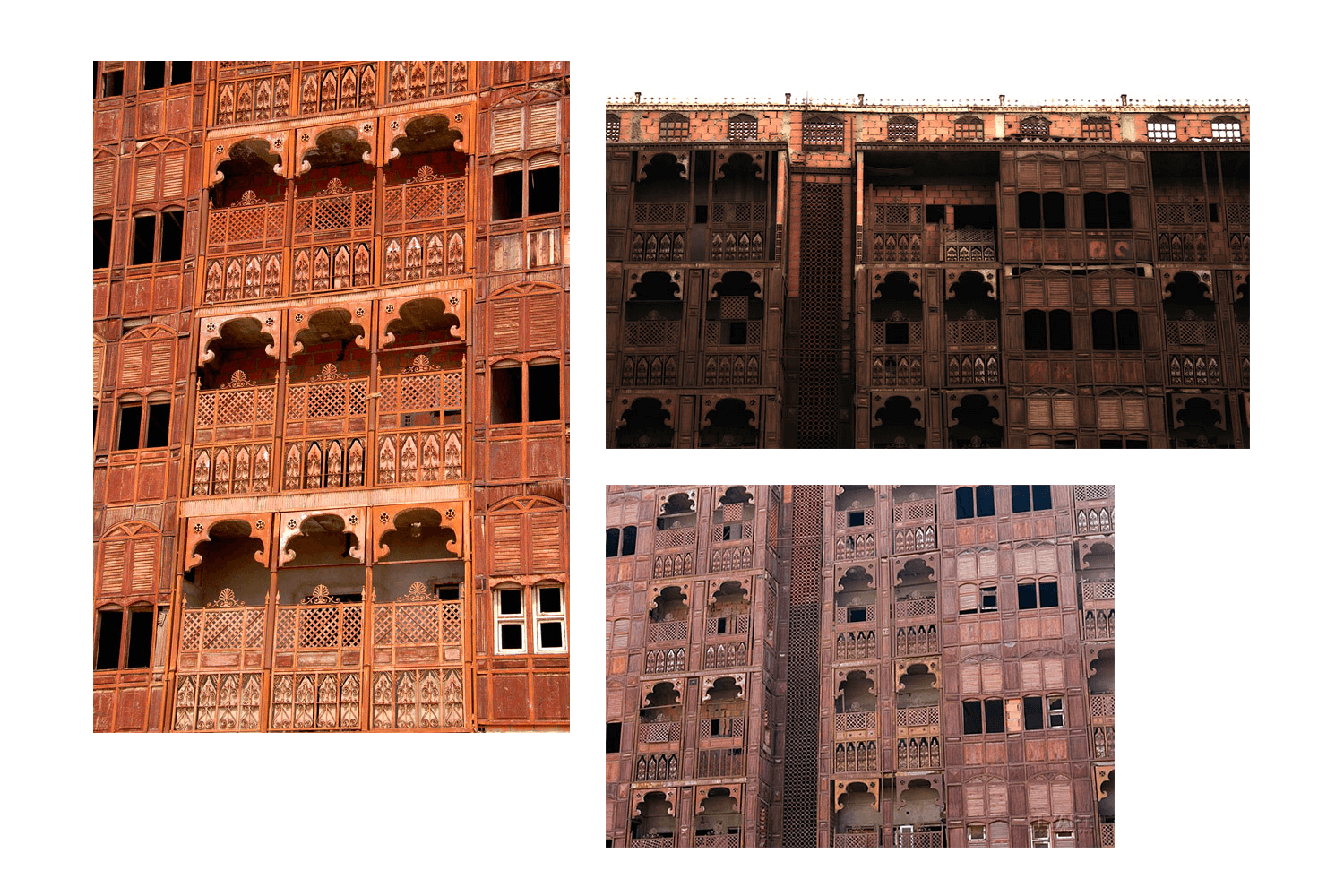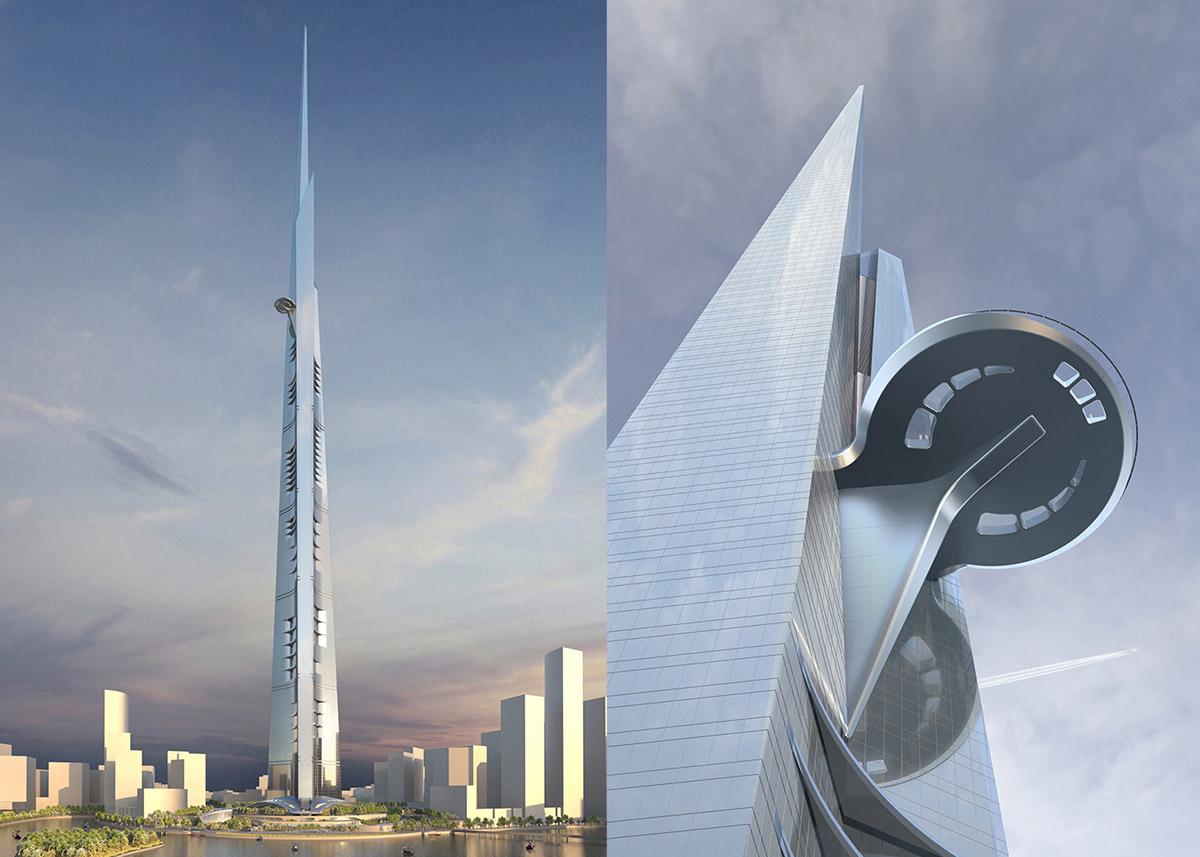Jeddah
Jeddah is the second city of Saudi Arabia. It is a major port and transit point for pilgrims heading to Mecca. Unlike the gray Riyadh, Jeddah is a true Arabian fairy tale whose beauty takes your breath away.
Upon arrival from Riyadh to Jeddah, I felt for the first time what humidity is. Riyadh is located in the middle of a desert, completely isolated from any bodies of water, which makes it incredibly dry. The heat of forty degrees in Riyadh is hardly noticeable, similar to twenty-five degrees in Moscow. But Jeddah, an ancient port on the Red Sea, at the same temperature by noon turns into a pit of hell.
In Saudi Arabia, it is not customary to wear shorts and short-sleeved shirts. Local Arabs and Pakistani immigrants wear their traditional clothing — long white thobes or loose pants under a linen shirt. It is weird for a European tourist to dress that way. We have to wear jeans and a long-sleeved shirt.
Oh Allah, how unbearably hot it is in Jeddah! In the morning, it seems that the heat is not so intimidating, and the body has already become accustomed to it. However, as the scorching Arabian sun rises closer to its zenith, the atmosphere becomes increasingly reminiscent of a furnace. Under the thick denim fabric, it’s not just hot — the whole body starts to burn as if molten lead is being poured into the pants. At noon, it is so hot in Jeddah that within a minute one would want to cut their clothes with scissors.
⁂
But when you enter the old town of Jeddah, you forget about everything.

Can walk for the next two hours in unbearable heat and not even notice.

Just circle around like a fool, with head tilted upwards and mouth wide open.

Nowhere else in the world, except perhaps Yemen, has the authentic Arab architecture been preserved. No words can suffice to convey the complete awe and astonishment.





The old town of Jeddah is called Al-Balad, which translates from Arabic simply as “town.”

In the middle of the last century, the Danish traveler Jørgen Bich visited Saudi Arabia, risking his life. Even now, photographers are not welcomed in the country, and back then, he could have simply lost his head for secretly smuggling photographic equipment. To carry out his journey, Jørgen disguised himself as an Arab: he acquired a tan, dressed in traditional clothing, and inserted brown lenses into his eyes. Among other things, he also visited Jeddah. Here is how he describes his impressions in the book “Behind the Arabian Veil.”
Many Arabs today are ashamed of the “ancient trunks,” as they call the old houses, and do not understand the admiration of foreigners who marvel at the numerous closed balconies that seem to be glued to the walls of the buildings.


Women sit on the balconies, chattering like parrots, and peering through small windows onto the street, where they themselves are rarely allowed to venture.



Certainly, these houses are much less sturdy than modern reinforced concrete buildings. Like in other cities of Saudi Arabia, they are constructed using sun-dried clay. And even though rainfall is quite rare here, even the strongest houses often become waterlogged in the rain and crumble like a house of cards.
When I was in Jeddah, there happened to be a downpour. Although every resident of Jeddah knows that sooner or later there will be rain, they freeze, as if paralyzed, when the first drops start drumming on the ground. And in the next moment, they rush home because the rain can be heavy, and it’s better not to take their eyes off their clay structures.


Jeddah is teeming with vibrant and colorful life everywhere, but it is especially vivid in the small shops scattered throughout the city. To peek into such a shop is like casting a glance into the black mouth of a giant monster.
In one corner, someone’s eyes gleam in the dim light, and beneath them on the table lies a pot that is about to be cleaned. From the other corner, loud laughter can be heard, but no one is visible, as if the entire house is roaring with laughter.


And wherever you look, in the colorful mosaic of the crowd, green headscarves of the Muslim police can be seen flickering everywhere. The main task of the police is to ensure that the believers perform their prayers five times a day when the call to prayer resounds from the minaret.
But Jeddah has not been spared from technological progress either, and the muezzin often invites Muslims to prayer by first recording his fervent call on a cassette tape. Sometimes the technology fails, and then the loudspeaker confuses the prayer times or unexpectedly unleashes curses and profanities on the believers, which were recently spewed by a tape recorder repairman.
And the fanatic policemen run back and forth, shouting, “To prayer, to prayer!” Owners of small shops and their customers should, without wasting time, rush to the mosque; if they delay, they will have to acquaint themselves with the batons carried by the police.
But nowhere have I seen such a variety of goods as in Jeddah. And all the products are of the highest quality!
Here you can find luxurious gilded chairs for 2,000 crowns each, golden plates, exquisite watches, silk imported directly from China, the finest overseas downy scarves (which local merchants even add golden threads to), and electric bicycle horns.

The old houses, which bear the imprint of ancient Turkic style as a result of centuries of foreign rule, are now rapidly giving way to new reinforced concrete buildings, where attempts are made to compensate for the uniformity and lack of national color to some extent with luxury and monumentality.
Certainly, attempts are made to embellish these buildings with arches and pointed windows in the ancient Turkic style, but it all looks like a pitiful imitation of foreign models and essentially contradicts both traditional national style and modern functionalism.

However, the old part of the city still consists of picturesque scenes like theater backdrops: houses with closed balconies, just as, in our perception, houses in Saudi Arabia should be.




As Jorgen Bich wrote, Arabs do not appreciate the full beauty of Jeddah. The affluent residents have long moved away from the historic part of the city, so only the poor live here.

Until recently, Al-Balad was crumbling under the weight of time. It seems that nothing has changed here since Jorgen visited the country. His journey took place in 1960, and the photographs still perfectly match the text.
Currently, old Jeddah is in a state of neglect. Many houses are abandoned and destined for demolition.

No one lives here anymore, and it’s unlikely that anyone will in the future.


But there is also good news. Not long ago, enlightened people in Saudi Arabia finally realized that they have a true architectural treasure right under their noses. Several years ago, Al-Balad was included in the UNESCO World Heritage List, and the government started allocating millions of dollars for the restoration of the historic center.
And the investments have already started yielding results. The wooden balconies and facades were carefully removed from the old houses. Not long ago, the most beautiful house in Jeddah was entirely adorned with intricate carvings.


Most likely, in a few years, it will be adorned anew. Some houses in Jeddah have already been renovated. And it must be said that the Arabs are doing an excellent job with the reconstruction! The new wooden balconies are indistinguishable—absolutely indistinguishable—from the old ones. It’s incredible how the craftsmen managed to preserve the cutting technique unchanged for several centuries.


Therefore, there is every hope that old Jeddah will once again become a vibrant, colorful city capable of attracting numerous tourists. The only thing that remains is to open Arabia itself for visit.
New Jeddah
I can assure you: the entire rest of Jeddah combined is not worth even a tenth of the old city. There are no prominent skyscrapers in Jeddah. There are only a few towers on the outskirts of the city. By 2020, there were plans to build the tallest skyscraper in the world here, but there is a suspicion that there won’t be enough funds.

And for now, the only attraction in Jeddah is the tomb of Eve. Muslims believe that the first woman is buried here. Supposedly, even the name Jeddah sounds similar to the Arabic word “grandmother.”
Eve’s cemetery turned out to be open for visitation only to Muslims. Therefore, I had to climb onto a transformer booth and take a photo of the cemetery through the fence. There was nothing interesting there, of course.

Unlike Riyadh, Jeddah is a very free city. One could even say liberal. It’s a seaside resort city with numerous hotels and beaches. Here, even reserved Arabs sometimes go into the sea.

Along the waterfront, many people freely walk around in T-shirts and even shorts.

And in Jeddah, nobody pays attention to the camera either.
A lot of people come to the waterfront every day to watch the sunset. It’s a source of relaxation in the hot and dry desert, where everyone feels good.


Moreover, Jeddah is home to the world’s largest fountain — the King Fahd Fountain. Water shoots up from it to a height of 120 meters, with nearly 20 tons of water in the air at any given time.



